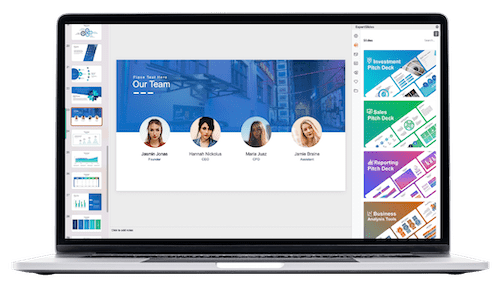Research Paper Presentation – Tips and Tricks
Table of Contents
When presenting a research paper, the primary objective is to effectively convey research findings and insights to the target audience. The presentation style can significantly influence how the audience perceives the research, regardless of the setting, whether it be a conference, classroom, or professional environment. A well-structured and engaging presentation is essential for conveying the significance of the research and leaving a lasting impact on the audience.
To deliver a successful research paper presentation, thorough planning and preparation are crucial. This involves organizing content in a clear and logical sequence, designing effective visual aids, engaging the audience, and being prepared to address questions and feedback. Furthermore, delivering a confident and polished presentation is vital for conveying the importance of the research and leaving a positive impression on the audience.
Key Takeaways
- Practice your research paper presentation multiple times to ensure a smooth and confident delivery
- Organize your presentation with a clear structure and logical flow to keep your audience engaged
- Use effective visual aids such as slides, graphs, and images to enhance your presentation and convey information
- Engage your audience by using storytelling, asking questions, and encouraging participation
- Prepare for questions and feedback by anticipating potential inquiries and being open to constructive criticism
Organizing Your Research Paper Presentation

One of the most important aspects of delivering a successful research paper presentation is organizing your content in a clear and logical manner. This includes structuring your presentation in a way that effectively communicates the purpose of your research, the methods you used, your findings, and the implications of your research. It is important to start by introducing your topic and providing some background information to help your audience understand the context of your research.
From there, you can move on to discussing the methods you used to conduct your research and the findings you obtained. Finally, you should conclude by discussing the implications of your research and how it contributes to the existing body of knowledge in your field. In addition to organizing your content, it is also important to consider the flow of your presentation.
This includes transitioning smoothly between different sections of your presentation and using clear and concise language to convey your ideas. It can be helpful to create an outline or script for your presentation to ensure that you cover all the necessary points and maintain a coherent flow throughout your presentation. By organizing your content and ensuring a smooth flow, you can effectively convey the significance of your research and keep your audience engaged throughout your presentation.
Designing Effective Visual Aids
In addition to organizing your content, designing effective visual aids can greatly enhance the impact of your research paper presentation. Visual aids such as slides, charts, graphs, and images can help illustrate key points, provide visual representations of data, and make complex information more accessible to your audience. When designing visual aids for your presentation, it is important to keep in mind that they should complement your spoken words rather than distract from them.
This means using clear and concise visuals that enhance the understanding of your research rather than overwhelming or confusing your audience. When creating slides or other visual aids, it is important to keep them simple and uncluttered. This means using a clean and professional design, using legible fonts and colors, and avoiding excessive text or unnecessary graphics.
It can be helpful to use bullet points or short phrases to convey key points, and to use visuals such as charts or graphs to illustrate data or trends. Additionally, it is important to ensure that your visual aids are relevant to the content of your presentation and are used strategically to enhance the understanding of your research. By designing effective visual aids, you can help convey the significance of your research in a clear and visually appealing manner.
Engaging Your Audience
| Topic | Tips and Tricks |
|---|---|
| Content | Ensure the research paper has a clear and concise structure with an introduction, methodology, results, and conclusion. |
| Visuals | Use visuals such as graphs, charts, and images to support the data and make the presentation more engaging. |
| Delivery | Practice the presentation multiple times to improve delivery, timing, and confidence. |
| Engagement | Engage the audience by asking questions, using anecdotes, and maintaining eye contact. |
| Feedback | Solicit feedback from peers or mentors to improve the presentation before the final delivery. |
Another important aspect of delivering a successful research paper presentation is engaging your audience throughout the presentation. This involves using various techniques to capture the attention of your audience, maintain their interest, and encourage active participation. One effective way to engage your audience is by using storytelling or real-life examples to illustrate key points and make your research more relatable.
This can help create a personal connection with your audience and make your presentation more memorable. In addition to storytelling, it can be helpful to use interactive elements such as questions, polls, or group activities to involve your audience in the presentation. This can help keep your audience engaged and encourage active participation, which can enhance their understanding and retention of the information you are presenting.
Additionally, it is important to maintain eye contact with your audience, use gestures and body language to convey enthusiasm and confidence, and speak clearly and audibly to maintain their attention. By engaging your audience throughout the presentation, you can create a more dynamic and impactful experience for your audience.
Handling Questions and Feedback

During a research paper presentation, it is common for audience members to ask questions or provide feedback on the research being presented. It is important to be prepared to handle questions and feedback in a professional and confident manner. This includes being knowledgeable about your research and being able to provide clear and concise answers to questions from the audience.
It can be helpful to anticipate potential questions that may arise during the presentation and prepare thoughtful responses in advance. In addition to handling questions, it is important to be open to feedback from your audience and be willing to engage in constructive dialogue about your research. This means being receptive to different perspectives and being able to address any concerns or criticisms in a respectful manner.
It can be helpful to thank audience members for their feedback and use it as an opportunity to further clarify or expand upon the points you have presented. By handling questions and feedback with professionalism and confidence, you can demonstrate a thorough understanding of your research and leave a positive impression on your audience.
Tips for Delivering a Confident Presentation
Delivering a confident presentation is essential for effectively conveying the significance of your research and leaving a lasting impression on your audience. One key tip for delivering a confident presentation is to practice extensively before the actual presentation. This includes rehearsing your presentation multiple times, familiarizing yourself with the content, timing yourself, and refining your delivery.
By practicing extensively, you can build confidence in your ability to effectively convey your research and handle any unexpected challenges that may arise during the presentation. Another tip for delivering a confident presentation is to maintain a positive mindset and focus on the value of your research. This means approaching the presentation with enthusiasm, passion, and a genuine belief in the importance of your work.
By maintaining a positive mindset, you can exude confidence and enthusiasm during the presentation, which can help captivate your audience and leave a lasting impression. Additionally, it is important to take deep breaths, maintain good posture, and use positive self-talk to calm any nerves or anxiety before and during the presentation. By following these tips, you can deliver a confident presentation that effectively conveys the significance of your research.
Key Takeaways for Successful Research Paper Presentations
In conclusion, delivering a successful research paper presentation requires careful planning, preparation, and effective communication skills. By organizing your content in a clear and logical manner, designing effective visual aids, engaging your audience, handling questions and feedback, and delivering a confident presentation, you can effectively convey the significance of your research and leave a lasting impression on your audience. It is important to approach the presentation with enthusiasm, passion, and a positive mindset in order to captivate your audience and leave a lasting impression.
Overall, delivering a successful research paper presentation requires attention to detail, effective communication skills, and confidence in conveying the significance of your research. By following these tips and techniques, you can deliver a compelling presentation that effectively communicates the importance of your research and leaves a positive impression on your audience. With careful planning and preparation, you can deliver a successful research paper presentation that effectively conveys the significance of your work and leaves a lasting impression on your audience.
FAQs
What is a research paper presentation?
A research paper presentation is a formal way of presenting the findings and analysis of a research study to an audience. It typically involves a structured presentation of the research paper’s key points, methodology, results, and conclusions.
What are some tips for a successful research paper presentation?
Some tips for a successful research paper presentation include: – Practicing the presentation multiple times to become familiar with the content and timing. – Using visual aids such as slides to enhance the presentation. – Engaging the audience through eye contact and clear, confident speaking. – Being prepared to answer questions from the audience. – Staying within the time limit set for the presentation.
What are some common mistakes to avoid in a research paper presentation?
Some common mistakes to avoid in a research paper presentation include: – Reading directly from the slides or notes, instead of speaking naturally. – Overloading the presentation with too much information or technical jargon. – Failing to engage the audience or make the presentation interactive. – Going over the time limit for the presentation. – Not being prepared to answer questions from the audience.
How can I make my research paper presentation more engaging?
To make a research paper presentation more engaging, consider: – Using visual aids such as slides, graphs, and images to illustrate key points. – Incorporating real-life examples or case studies to make the research more relatable. – Encouraging audience participation through questions or interactive activities. – Using storytelling techniques to make the presentation more compelling. – Incorporating multimedia elements such as videos or audio clips, if appropriate.
Get 15+ Mio. PowerPoint Assets - FREE SIGN-UP

Sign up for free to our PowerPoint extension, ExpertSlides. Everything you need, directly in PowerPoint. No credit card required.
Related Posts
Recent Posts
Main Menu
Knowledge base
Useful Links






